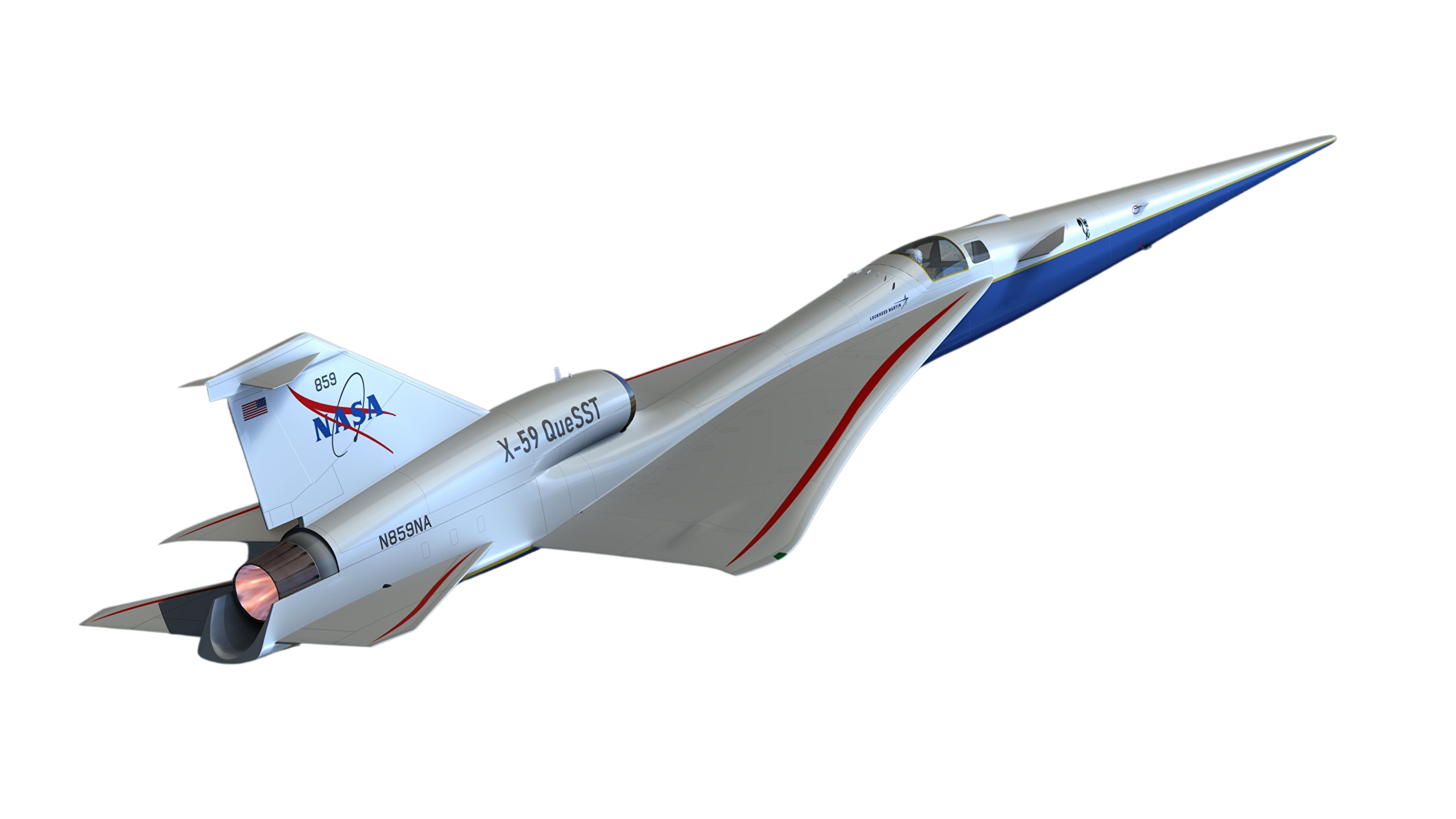X-59 QueSST de la NASA : Exxelia est à bord
Ces dernières semaines, la NASA a beaucoup communiqué sur son programme d’avion expérimental X-59 QueSST, dont le démonstrateur arrive en fin d’assemblage chez l’avionneur Lockheed-Martin. Maillon essentiel du projet Low Boom Flight Demonstration (LBFD), le X-59 entamera ses campagnes d’essais.
 Si le programme tient ses promesses, il pourrait permettre l’émergence d’avions de transport supersoniques capables de voler au-dessus des terres, sans les limitations imposées au Concorde en son temps.
Si le programme tient ses promesses, il pourrait permettre l’émergence d’avions de transport supersoniques capables de voler au-dessus des terres, sans les limitations imposées au Concorde en son temps.
Pour ce projet, Exxelia produit principalement des bobines en provenance de nos sites USA. Nos composants sont à destination du moteur de l’avion.
Une configuration exceptionnelle pour des capacités exceptionnelles. Crédits: NASA
Il volera à une vitesse de 1,5 Mach (1,5 fois la vitesse du son), soit plus de 1 800 kilomètres par heure. La NASA espère que son appareil pourra, à terme, être utilisé dans le domaine de l’aviation civile.
Si les essais sont concluants, le X-59 QueSST pourrait donc avoir deux effets révolutionnaires sur le paysage aéronautique américain, voire mondial :
- L’avion d’essai pourrait servir d’inspiration à de futurs avions de transport produits en série, qu’il s’agisse d’avions de ligne ou d’avions d’affaire.
- L’ensemble du projet LBFD pourrait permettre une évolution de la réglementation aérienne actuelle. Plutôt que d’interdire tous les vols supersoniques civils au-dessus des USA, comme c’est le cas aujourd’hui, la NASA propose d’instaurer une réglementation en fonction du niveau de bruit.
Source : Lockheed Martin, NASA